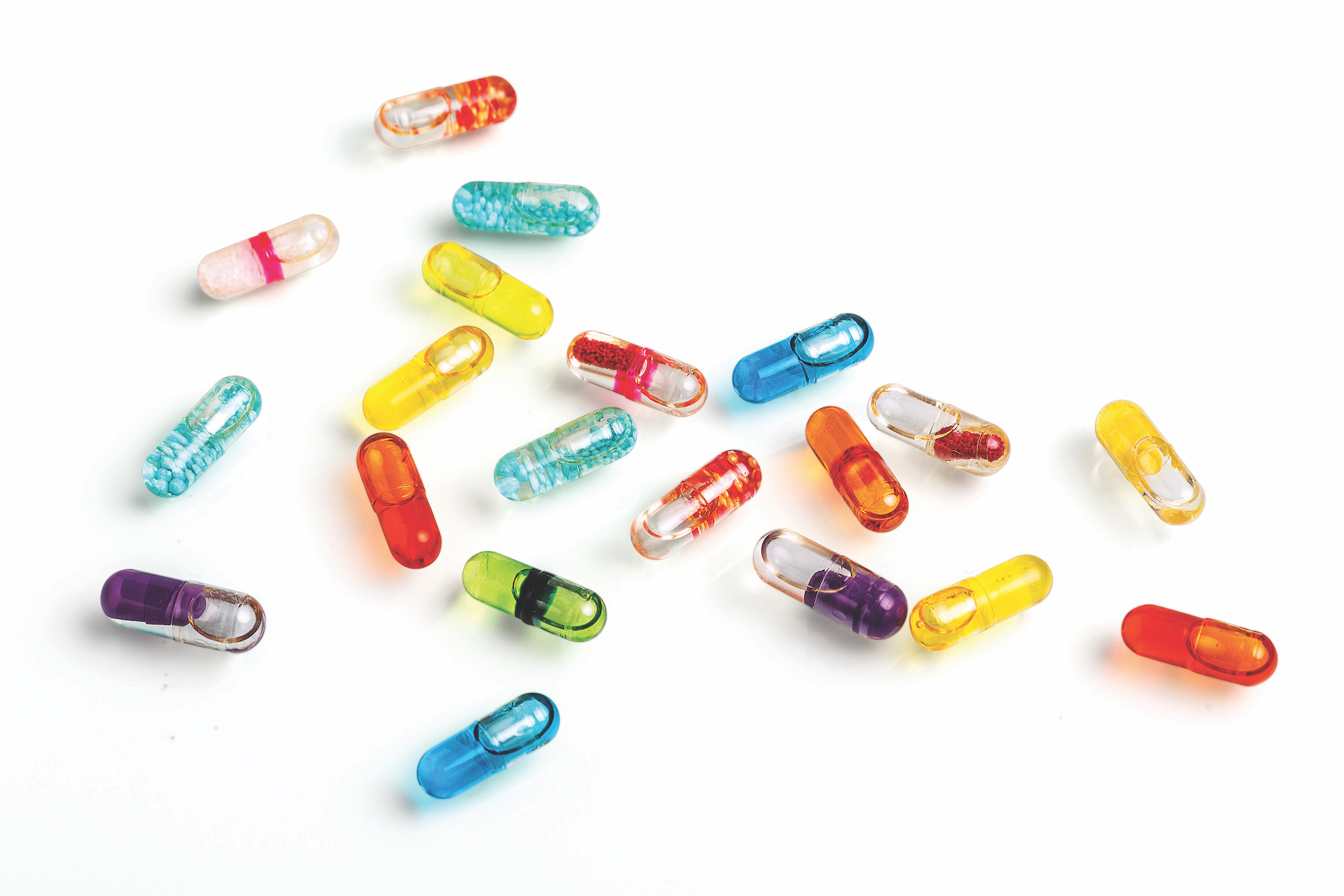Encapsulation of liquids is prevalent for a long time, primarily in the form of a one-piece soft gelatin capsule (softgels). While many pharmaceutical companies continue to use softgels for liquid encapsulation, formulation scientists are relooking at two-piece hard gelatin capsules to effectively overcome the limitations of softgels. Recently, there has been a renewed interest in using liquid-filled hard capsules after having rediscovered its advantages. The most important among these is the ability of the capsules to formulate compounds with poor solubility. Additionally, they can help accelerate the speed to market by providing the flexibility to rapidly develop and test formulations in-house at R&D and large scale.
From the branding perspective, liquid-filled hard gelatin capsules offer a great opportunity to create distinct brand differentiation in the competitive pharma market. This novel dosage form can be utilised for reintroducing existing formulations in a new attractive format to revitalise the brand and extend its brand life.
Why liquid-filled hard gelatin capsules?
The hard gelatin capsules were initially designed as unit dosage forms for the delivery of drugs in granular or powdered form. However, the introduction of pellet technology revolutionalised the area of capsule drug delivery systems, helping to combine capsule technology and multi-particulate drug delivery for better therapeutic effect. In the early 1980s, liquid-filled hard gelatin capsules were introduced as an alternative to soft gelatin capsules as they offer multiple advantages such as ease of scalability and manufacturing, faster action, ease of packaging, and higher product stability. Most importantly, unlike softgels, hard gelatin capsules offer the possibility of combination filling wherein drugs can be encapsulated in the form of beads, microtablets, and pellets in combination with the liquid formulation. Not only this allows to incorporate multiple incompatible drugs is a single capsule but moreover, it creates a formulation that is way more aesthetic and appealing to the consumers.
In terms of formulation development and drug delivery, liquid-filled hard gelatin capsules provide numerous benefits such as:
- use of excipients with higher melting points
- improved bioavailability
- sustained release
- improved content uniformity of low-dose actives and potent compounds
- enhanced stability
- lower moisture content
- less gas transmission
- ease of coating
Drugs ideal for liquid-filled capsules are those with poor water solubility and bioavailability, with low melting points, potent drugs, hot liquids, and where sustained release profile of drugs is desirable.
Few ground rules
Before selecting hard gelatin capsules for your drug it is important to keep in mind certain characteristics of this dosage form. Gelatin is the base material for the shell matrix of liquid-filled capsules and is largely obtained from collagen from bovine bone, bovine hide, and porcine skin. Alternative vegetarian materials such as potato starch and carrageenan from seaweeds, as well as a polymer such as hydroxypropyl methylcellulose (HPMC) have also been investigated for capsule shell matrix to reduce the cost of gelatin and, also for vegetarian use. The gelatin used for liquid-filled capsules has a bloom strength of approximately 220–280 for hard capsules and 150–200 for softgels. A liquid drug formulation filled in hard gelatin capsule requires excipients such as lipophilic liquid or semisolid vehicles, solubilising agents, surfactants, and emulsifying agents. Further, the fill materials should have certain properties to make them suitable for filling in hard gelatin capsules. Few considerations are as given below:
- The fill material should be chemically inert and compatible with the gelatin shell.
- It should not have more than 2% of moisture exchange with the shell which has the moisture content between 13-16% to maintain flexibility.
- Temperature, viscosity, and size of suspended particles must be appropriate to permit filling into the hard gelatin capsules.
Band sealing
Once the capsule is filled to 90% of its capacity, the hydro-alcoholic fusion process is used to seal the capsule to avoid tampering and leaks. Another method of sealing involves cap-body interface banding with a layer of gelatin.
Evaluation methods
The evaluation parameters for liquid-filled hard gelatin capsules involves testing of content uniformity, drug content, leak test, seal integrity, weight variation, disintegration test, moisture uptake, and stability studies. In vitro testing of the capsules should be carried with the USP type II dissolution apparatus. Stability testing should be able to investigate physical characteristics, drug content, and drug release after storage at stressed conditions.
The bottom line
Liquid-filled hard gelatin capsules have the potential to transform the challenging formulations into simple ones with minimal steps. Besides, they make an attractive dosage form due to their capability to encapsulate different combinations of tablets, pellets, caplets, and capsules in liquid. With such incredible opportunities, it is hardly surprising that these attractive dosage forms are here to stay for a long time
References:
-
Cade, D., Cole, E. T., Mayer, J. P., & Wittwer, F. (1986). Liquid filled and sealed hard gelatin capsules. Drug Development and Industrial Pharmacy, 12(11-13), 2289-2300.
-
Sonar, S., Gondkar, S., & Saudagar, R. B. (2019). Liquid Filled Hard Gelatin Capsule. Journal of Drug Delivery and Therapeutics, 9(3-s), 832-835.
-
Ma, J. H., Yang, M., Zeng, M., Chen, X. M., & Lan, J. (2008). A review on liquid-filled hard gelatin capsules. Zhongguo Zhong yao za Zhi, Zhongguo zhongyao zazhi. China journal of Chinese materia medica, 33(5), 602.
-
Ewart, T. (1987). Liquid filled and sealed hard gelatin capsules.

